6. Le Pont du Nord (1981)
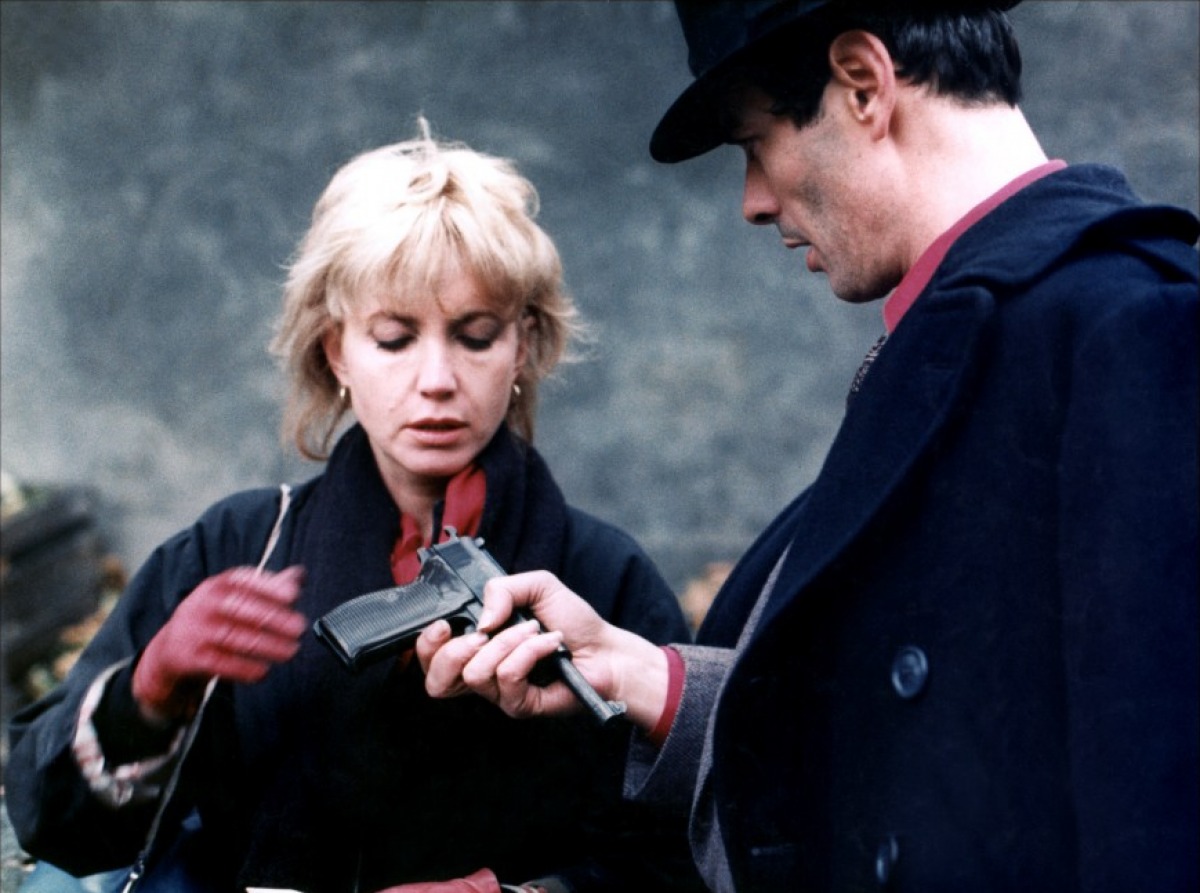
An exciting thriller set in Paris in the Nouvelle Vague noir tradition continuing in Rivette’s unique take on it. It opens with a scene of many cranes and a female motorcyclist Baptiste (Pascale Ogier) on a bridge.
Marie (Bulle Ogier), who was just released from prison, is shown getting off the back of a truck. Baptiste continues riding her motorcycle, the scene strikingly crosscut with many images of large lion sculptures. Baptiste crashes her bike, trying to avoid hitting Marie. Marie asks what she can do and Baptiste, angry, tells her to get out of the way.
Marie stops at a park, writing a note to a friend. She almost mails the letter, changes her mind and encounters Baptiste again on the street. Baptiste has a knife out and appears ready to stab the image of Kirosawa’s Kagemusha advertised on a sandwich board strung over someone’s shoulders. Thankfully, Marie stops her in time.
Baptiste catches up with Marie yet again. Baptiste says that there is a reason why they met three times, and that Marie needs her more than she thinks. Marie says she does not believe it. They have a debate on free will. Baptiste says everything is pre-ordained, while Marie thinks she is completely free.
The two women become traveling companions over the next few days, and it is another example of Rivette creating roles of substance which explore female friendship, (in this case, for actresses who are mother and daughter, and who helped co-write the script) but this time in a more noirish context, the film populated with shadowy “Max” figures (Baptiste’s name for them) who stand out as being a bit more stylized in an otherwise very documentary-like environment which often exploits ruins and industrial landscape.
Baptiste and Marie get caught up in a world of menace and intrigue revolving around a map discovered in a brown case carried by Marie’s friend Julien. The map which shows Parisian neighbourhoods has a sectioned spiral drawn over it.
The women go to different locations on the map as though they are part of a game, the meaning behind the game never quite clear, although many odd events happen and the Max figures are ever looming. A film which is quite delightful in its originality, ever surprising.
7. Love on the Ground (1984)
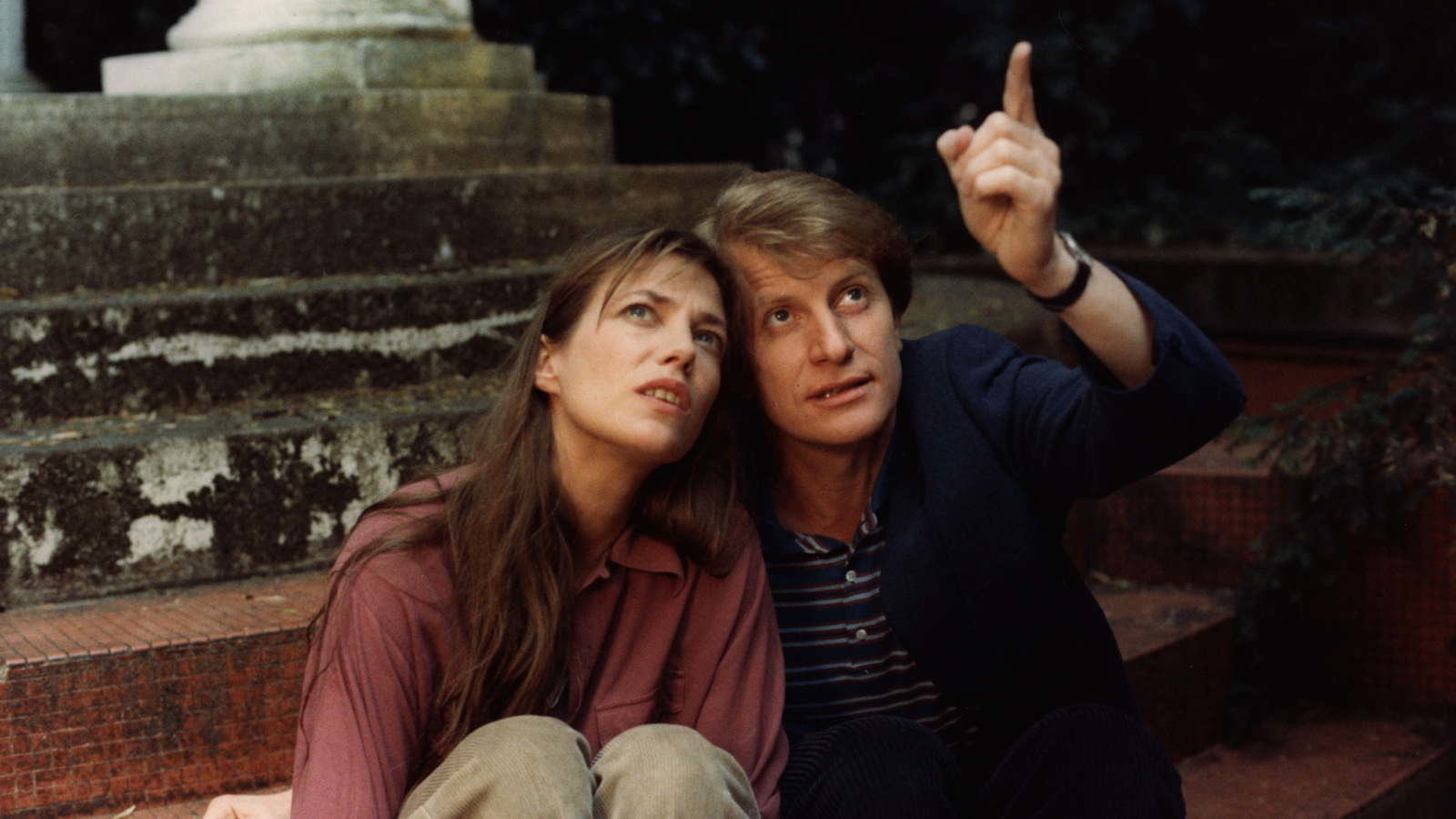
I think most people appreciate a nice Shakespearean kind of romp, which is the kind of tradition this film is in, although of course Rivette plays with and completely subverts people’s expectations. Imagine a kind of post-modern take on Bergman’s Smiles of a Summer Night (1955).
Charlotte (Geraldine Chaplin) and Emily (Jane Birkin) are invited by playwright Clement Roquemaure (Jean-Pierre Kalfon) to his mansion for a week to rehearse a new play, after he sees them perform one of his early works in an apartment and admires their performances. The women accept, as does fellow actor Silvano (Facundo Bo).
Both Charlotte and Emily begin having clairvoyant visions, which they both feel Clement’s friend the magician Paul (André Dussollier) is somehow responsible for.
One might note that it is bizarre for a playwright to live in a giant house, but the house used in this film of course gives adequate space for shifting passions and infidelities, and provides a stunning backdrop in the process. While being rather tongue-in-cheek it is still a very warm and sweet film anyway, and impressive with its two British leads speaking immaculate French.
8. Gang of Four (1989)
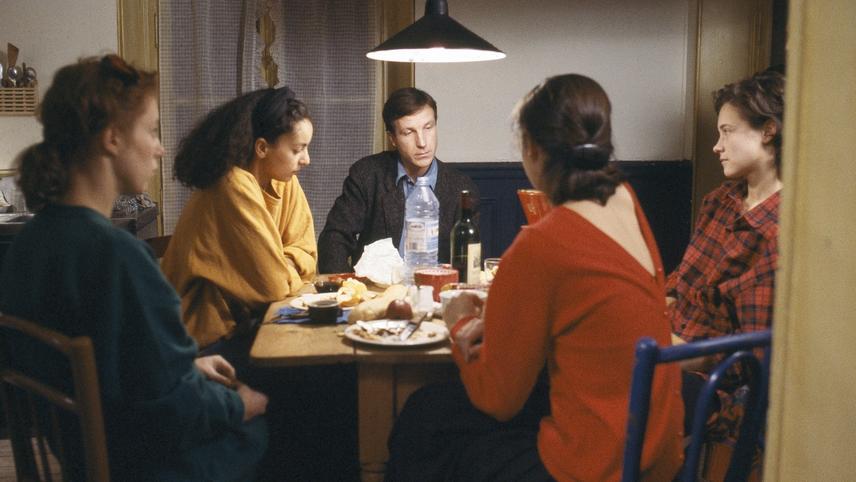
The film focuses on a group of four girls who live in the same house, Anna (Fejria Deliba), Lucia (Ines d’Almeida), Claude (Laurence Côte), and Joyce (Bernadette Giraud). They are studying acting with instructor Constance (Bulle Ogier), a stern woman who is a mystery due to her reclusiveness.
One night while Anna is leaving a gallery two men in the alley seem as though they might rape her. A man named Henri intervenes and drives her home. They both know Cécile, who just moved out of the house, and who Henri hints is trouble. Henri says he was in the business of making fake identity cards but it was too risky.
It seems he is purposely making wrong turns into dark, narrow streets. He asks for Anna’s number but she doesn’t give it to him. Henri calls on a car phone after she leaves and says that Anna doesn’t know anything. This has apparently been a setup. He says he thinks “it’s in the house” but also that he has no warrant, suggesting he is a policeman.
All four women eventually meet up with “Henri” although he also calls himself “Thomas” and “Lucien”. Henri it seems tells one lie after another and is probably dangerous, but is desperate to locate a key hidden in the house. Another great Rivette thriller with an almost all-female cast.
9. La Belle Noiseuse (1991)
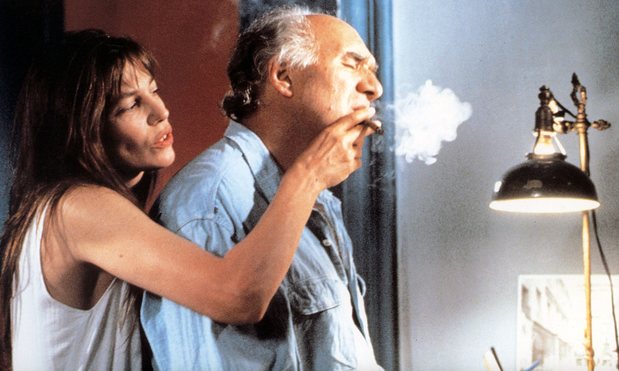
Adapted from Balzac and Henry James, La Belle Noiseuse is about a young artist Nicolas (David Bursztein) and his girlfriend Marianne (Emmanuelle Béart) who befriend a reknowned but reclusive painter Édouard Frenhofer (Michel Piccoli) and his wife Liz (Jane Birkin).
Frenhofer has not been satisfied with his work for years, but is inspired by Marianne and believes that she can be a model for La Belle Noiseuse, the concept for a painting he has had in mind for many years inspired by a 17th century courtesan.
In extremely long takes we see Frenhofer bend Marianne’s body like plasticine. Through the course of the film her wild-eyed gaze ranges from bored to questioning to humiliated to pained to defiant, as do her body postures.
The more Frenhofer draws and paints Marianne, the more violent his speech becomes about the process. He will turn her inside out and completely destroy her, he says. Many of his sketches use defacing devices and it’s notable how the dark face area mirrors the pubic region, especially when covered with cross-hatching, evoking Magritte’s famous 1935 painting Le Viol, where a woman’s face is depicted as a body.
A dark and challenging film but an innovative one with very admirable performances. A marvellous thing about it is that in the long takes of drawing and painting the hands actually belong to French artist Bernard Dufour, who is also supposed to have partially inspired the character of Frenhofer.
10. Joan the Maiden (1994)
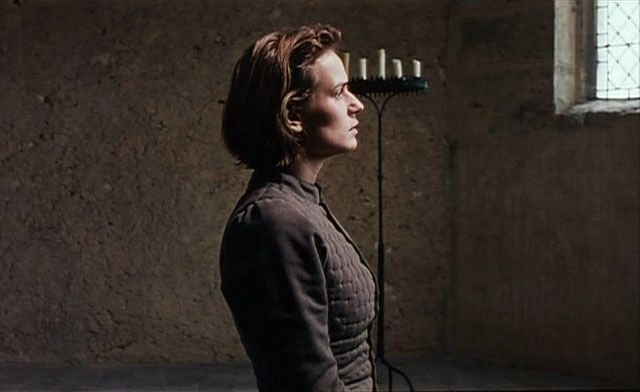
Just over five and a half hours in length, Joan the Maiden is the most detailed and faithful account of the life of Joan of Arc (Sandrine Bonnaire) or as we find out she was called in her time, Jehanne la pucelle, Joan the Maiden.
It is a very grey and earth-toned film but with striking use of reds and pinks. Scattered interviews with soldiers, family and other figures speaking directly to the camera add a documentary element, but otherwise the film is absolutely free of device. There are no arty cuts or angles for distancing effect.
Out of the ordinary for Rivette but overall it is a superb historical drama, with Bonnaire’s performance being an extremely convincing and complex one. Jehanne is a paragon of strength and courage, fighting like a man, but at times she breaks into girlish laughter and seems so feminine in her pink tights.
When Jehanne is wounded with an arrow she doesn’t hide her agony and it is almost unbearable. We are reminded that after all she is just a young girl, a vulnerability exposed less in portraits by Bresson or Dreyer. Rivette’s film is perhaps more of an agnostic one in the way that her figure is less saintly and in how Jehanne’s end is depicted.
Author Bio: S. D. Johnson is a poet working on her third volume of poetry. She is also a devoted cinéphile. Some directors she admires are Agnès Varda, F. W. Murnau, Aki Kaurismäki, Jean-Luc Godard, Nicholas Ray, Rainer Werner Fassbinder, Jacques Rivette, Fritz Lang and many many others.